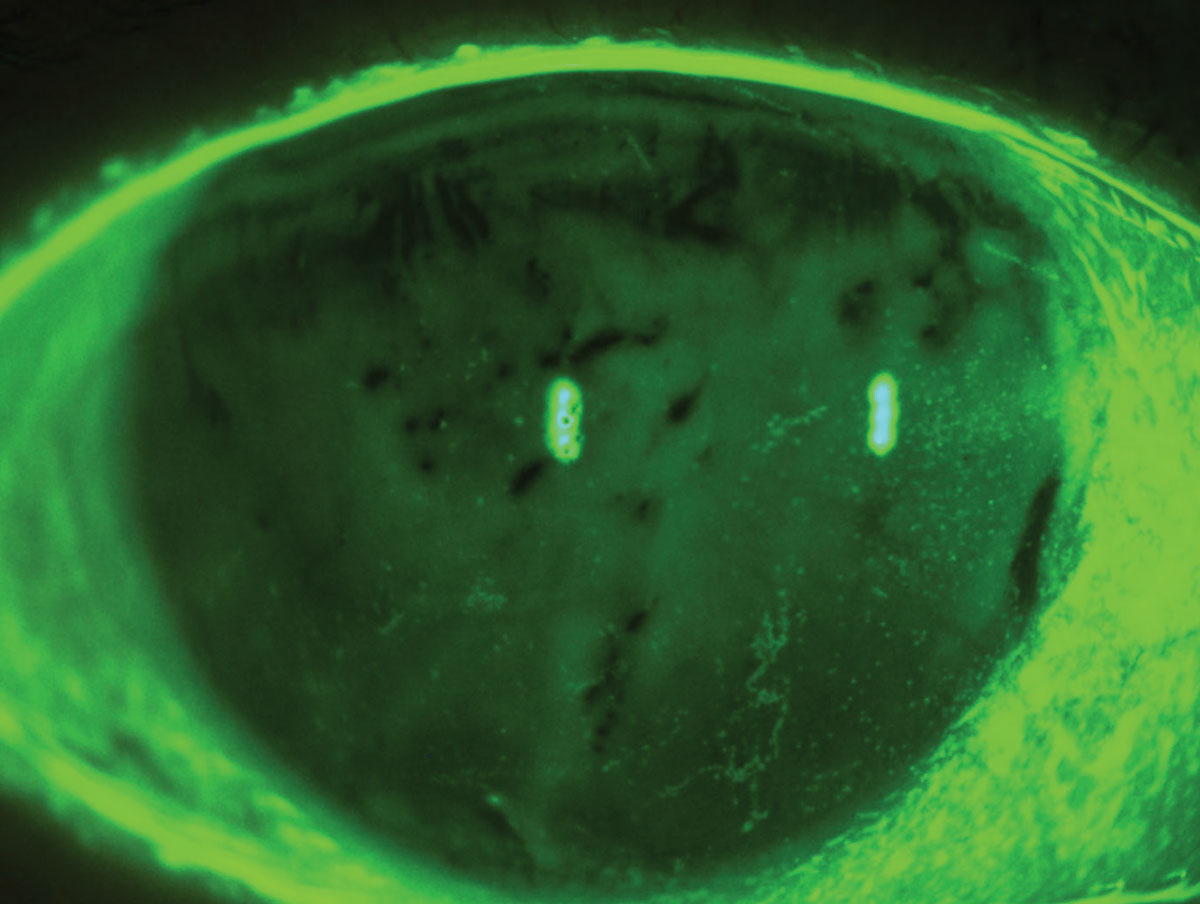 |
Mask taping may help reduce ocular surface issues during wear that occurs in some individuals. Photo: Luis Rojas, OD. Click image to enlarge. |
Mask wear has become a staple during the COVID-19 pandemic, and in some cases, this health and safety measure has resulted in dry eye and other ocular surface issues in some individuals. A new study that investigated ways to remedy this trend found taping the edge of an N95 mask resulted in better ocular surface stability in terms of TBUT, lipid layer thickness, tear meniscus height, corneal staining score and tear osmolarity.
Additionally, nearly two-thirds of the study participants reported a decrease in DED-related symptoms that correlated well with changes in OS parameters.
The investigation included 50 eyes of 50 healthcare workers who regularly wore N95 masks and were approximately 28 years old. The study team assessed pre-intervention, ocular surface parameters, subjective dry eye scores and visual acuity at the end of the participants’ eight-hour shifts during which they wore an N95 face mask without taping its upper edge. On the following day, the upper edge of the N95 mask was taped to the healthcare workers’ nasal bridges at the beginning of their shifts.
Ocular surface measures were significantly better after mask taping when it came to noninvasive TBUT, TBUT, tear lipid layer thickness, tear meniscus height, corneal staining score and tear osmolarity. On the other hand, the investigators observed no significant change in VA, Schirmer I or OSDI scores.
Considering symptom relief, 68% of individuals reported their ocular surface symptoms improved, and these findings appeared to correlate well with changes in noninvasive TBUT, tear meniscus height, tear lipid layer thickness and TBUT.
The primary mechanism behind the mask-associated dry eye was the mechanical desiccation of the ocular surface caused by inadvertent airflow, resulting from the reversal of the normal direction of exhaled air within the face mask, the researchers explained. The steady flow of warm exhaled air adversely affected the tear film homeostasis by causing increased tear evaporation, they added.
Additionally, the outermost lipid layer plays a key role in maintaining tear film stability and preventing its evaporation and is directly affected by the exhaled air.
“A key finding in our study was an increase in tear film lipid layer thickness after taping the upper mask edge, with a corresponding increase in TBUT,” the authors wrote in their paper. “Treatment targeting the augmentation of the tear film lipid layer should be considered in mask-associated dry eye patients, as it may play a key role in altering ocular surface stability.”
Nair S, Kaur M, Sah R, et al. Impact of taping the upper mask edge on ocular surface stability and dry dye symptoms. Am J Ophthalmol. January 1, 2022. [Epub ahead of print]. |


